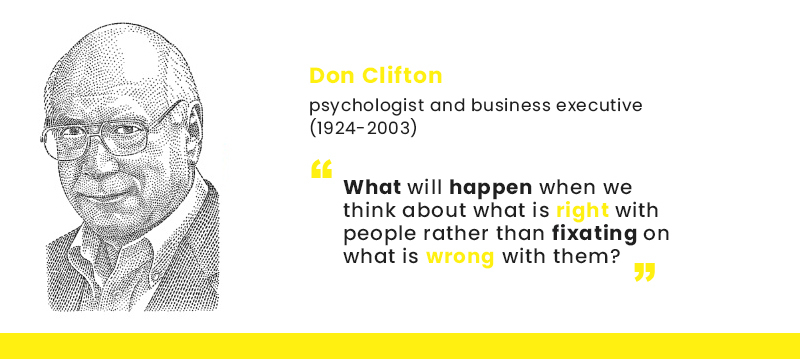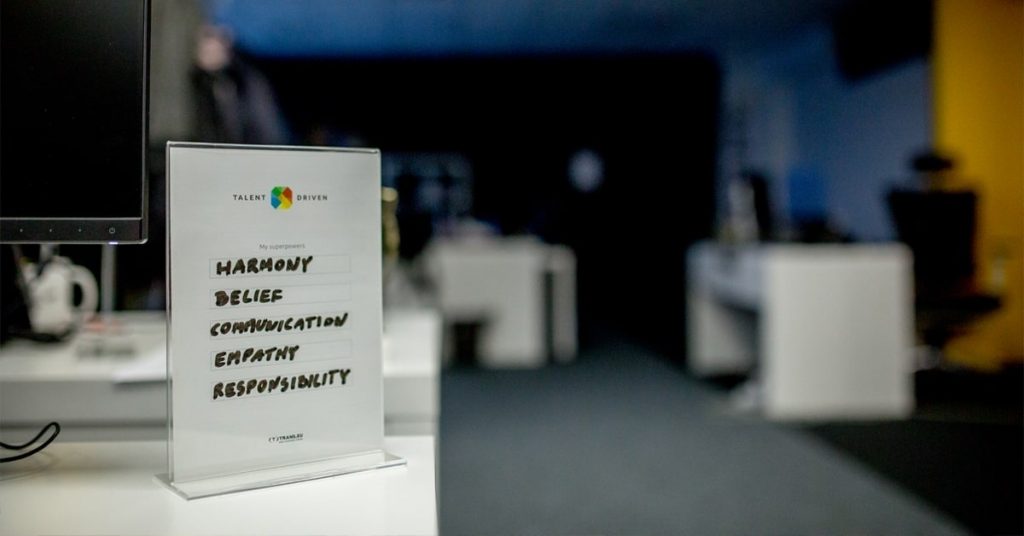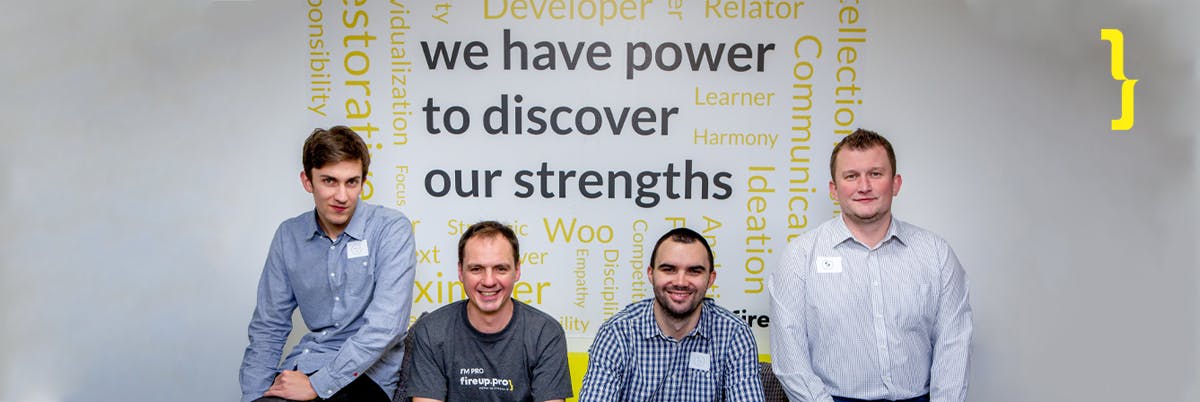What are you good at? But, like, REALLY good? We’re not necessarily talking about a specific activity, like knitting, but something that could help you in your work. Are you good at planning? Elevating the team spirit? Everyone has a talent, there’s a way to discover it, and here’s how we do it.
Recognizing the talent within you is important, because running a business is about cross-competencies. It’s nice if you’re a good programmer, but it’s even better if you’re a good programmer who can also explain things in a simple, friendly manner, making it easier to work together for the entire team. On the other hand, if you’re Strategic, your perceptivity and ability to plan ahead can greatly reinforce any group that lacks these traits.
Sounds obvious, but it’s actually difficult to find any person’s natural talent and apply it in your work environment. Trying different things blindly (and hoping you’ll stumble upon what you’re looking for) is pointless.
No, you should approach it the other way around. It’s also the way our software house has taken, and that, on average, lets the businesses increase their revenue by 29%, their sales by 19%, and decrease their employee fatigue by a whopping 72%.

It all starts with something you may have heard of: the CliftonStrenghts test. But it’s about much more than that.
We’re talking about creating a strengths-based culture
So it all starts with CliftonStrengths, which—there’s no denying it—is a great tool of self-assessment. It’s a well-known test that lets you recognize everyone’s personal traits and find the 5 dominant ones. This tool is so good that we use it in our standard recruitment process to find out more about the candidates: their strengths, their attitude towards work, etc.
There are four domains of strengths to consider: Executing, Influencing, Relationship Building, and Strategic Thinking. They help us decide where we should assign the employees to create the strongest teams. But finding personal advantages is one thing, and transforming them into something useful for the company is another.
A strengths-based culture is one that engages the employees, has managers who do their best to uncover the full potential of their teams, and recognizes individual traits. In order to achieve it at our software house, we took 5 important steps.
(The best thing about them is that you don’t have to lead a team of Java developers. We’re sure you can apply this approach to pretty much any company in any industry.)
STEP 1: Start from the top
For us, it all started with our CEO’s idea of building a strengths-based culture. He himself took this test and discovered that he has the Developer talent, which predisposes him to support other people’s growth. And so he introduced the CliftonStrengths test to our company to find out what hidden talents each of us has.
The fact that he did this is important, because it means that we could count on all the support and faith necessary to build a strong identity for our company. It’s because of our boss we discovered how to apply CliftonStrengths’ results for improving our effectiveness.
STEP 2: Give every single person a chance to discover their strengths
It’s crucial for this transformation to encompass everyone in the company. It’s about your CULTURE, and every single person is a part of it. This culture is also unique. You should recognize it, because it is your reason to be proud.
Start with giving your personnel access to CliftonStrengths. Let them discover themselves, and then you will discover how to best apply their talents.
If you want to avoid purchasing the original test, go for a simplified pen-and-paper version. Take a pen and draw three columns, titled Weak, Good, and Great. Then try to fill them with any personal treat that comes to mind, especially in the context of your work. When you finish discussing it with someone who really knows you – perhaps a family member. Ask them if anything is missing, and if you properly categorized each trait. Consider the traits that both of you see as Great, your natural talents.

STEP 3: Get a CliftonStrengths coach
“It’s dangerous to go alone,” said a character from a 45-year-old video game, and these words prevail. Having a competent adviser isn’t a must, but it’s a great help. We got lucky – our CEO is the one who helps individuals and groups max out their potential. However, if he wasn’t, we’d either hire a coach or find a person with the Developer talent among ourselves. It’s always good to have someone predisposed to lead us through the transformation.
STEP 4: Integrate strengths with effectivity management
Managers have to face all kinds of crises, and one of them is employee engagement. It’s common to have most of your employees claim that they are not managed in a way that motivates them to do a stellar job. That’s when strengths-based culture comes into play. It’s all about finding these individual traits in each person. What makes them tick? Why did they take this job, or this career, in the first place?
We’re not telling you to create a separate management plan for every employer, but to take a step towards recognizing their uniqueness, and to treating them individually in a scope that’s viable for your company and managers. The example of our Java programmers showed that this approach brings great results. We work faster, we are a tight team, there are less problems, and we actually enjoy our everyday job, always willing to do our best.
STEP 5: Transform your internal programs
This is the final step on the road to strengths-based culture. If you have any development programs for your employees or teams, don’t use a shake-and-bake template. Now that you know what makes each person who they are, try to use this information to steer your people in the right direction.
But why is it so important to recognize your culture?
Because it’s much more than a fancy, trendy thing to do. There are many sides to your internal culture. In short, defining it lets everyone (including yourself!) deeply understand the mission and the strategy of your company.
If we want to delve into detail, an internal culture…
…makes it easier for your employees to communicate and bond with each other.
…lets you establish clear rules and limitations to power and competencies.
…defines authority, allowing you to understand what really makes a person a leader.
…helps the employees cooperate more effectively.
…enables you to properly assess your team’s work.
…helps create a transparent remuneration system.
…results in fewer conflicts and helpful feedback.
“We need to go deeper!”
“Inception” was right! The deeper your knowledge about your personality, the closer you get to reaching your full potential. This applies to your personnel as well. It’s important to consciously adopt this approach, because talent is very easy to miss. Most people aren’t aware of their strengths, and if you ask them about it, they won’t know what to say. It’s even harder to understand these strengths in the context of skills.
In this area, awareness fuels motivation, and motivation is what makes a good, effective, and satisfied employee. You are surrounded by hidden talents. If you aren’t aware of this, it’s not because you lack talented people. You just haven’t found their strengths yet.
